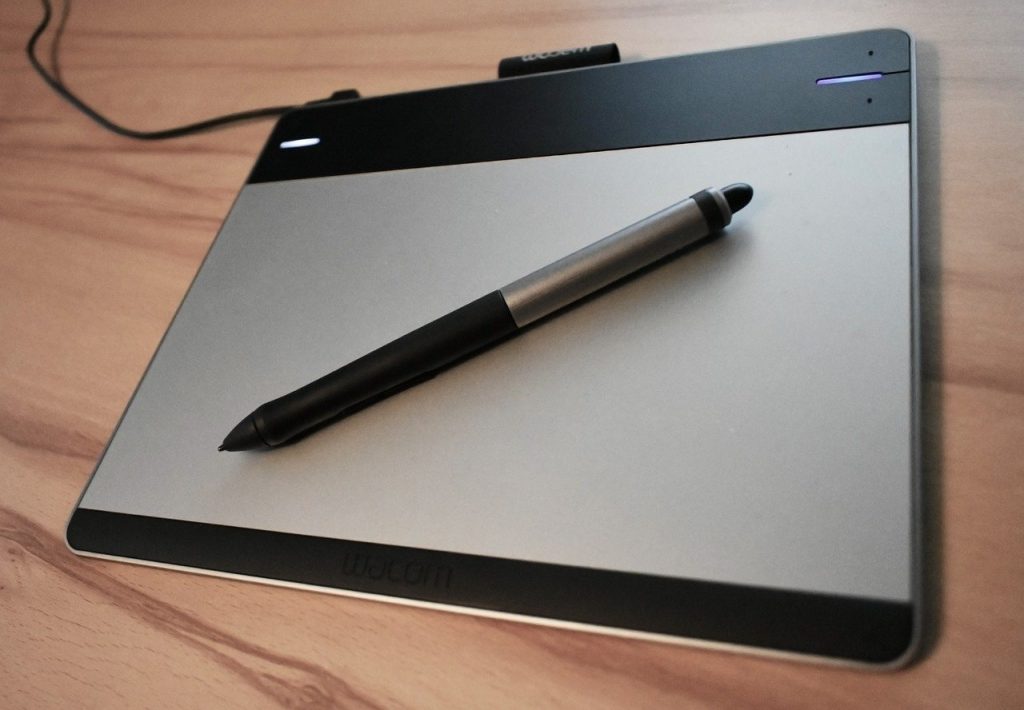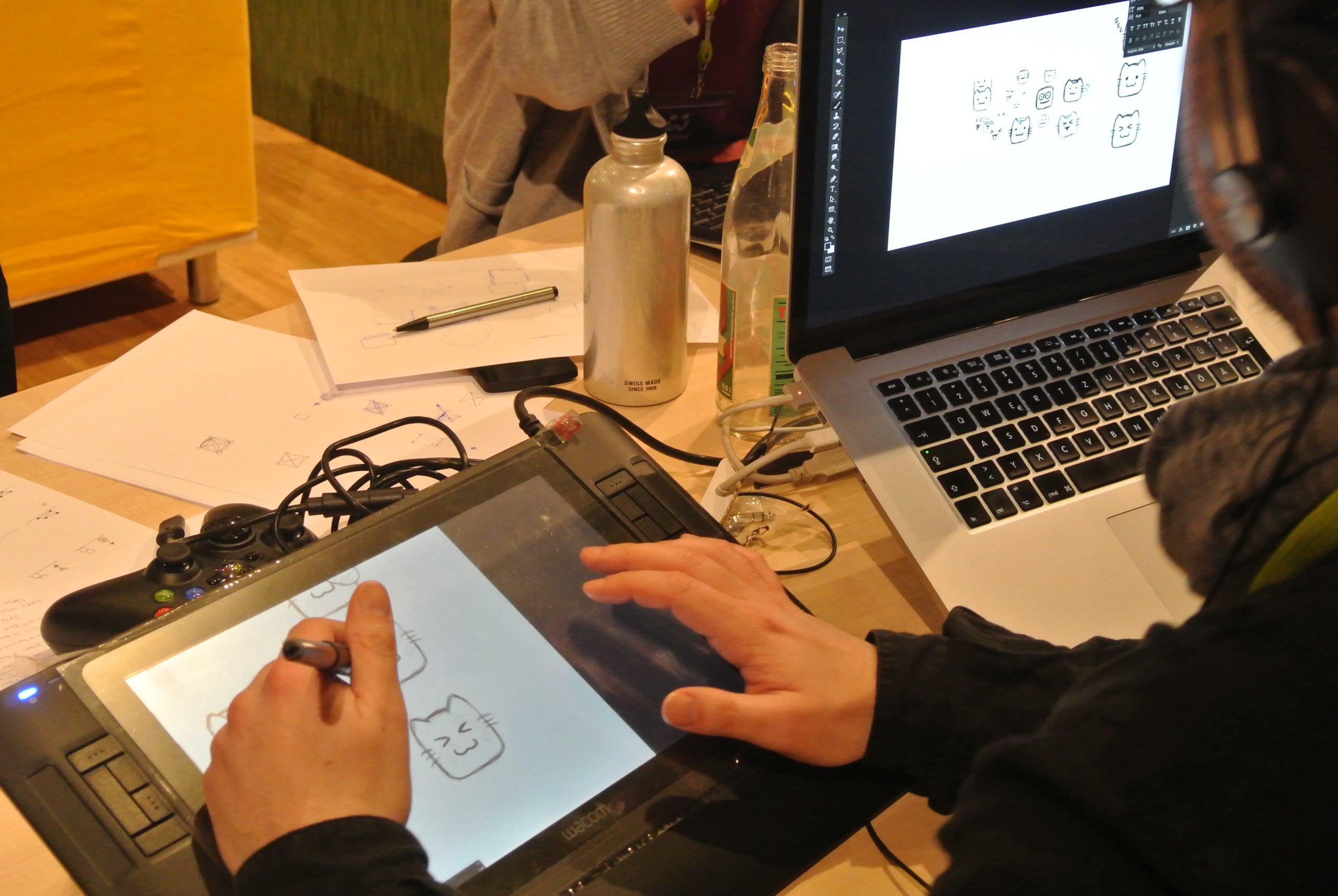Drawing tablets are on the short list of supplies for any aspiring digital artist. After all, a drawing tablet is the intermediary between your hand and the screen. Without a drawing tablet, you cannot realistically expect to learn how to draw digitally. The transition between pen and paper to using drawing tablet can be difficult. But with enough practice, you can have all the perks of digital drawing – such as unlimited canvas, unlimited revisions, and an infinite number of tools at your disposal. All you need is a PC or laptop and you are all set.
For those who do not know where to begin, drawing tablets can be grouped into two different types: simple and complex. Figuring out which one suits you can be a great start. Here are some ways the two types of tablets are different. By getting to know the upsides and downsides of each, you can determine which one best suited for your needs.

Simple Drawing Tablets
For those who have never tried to draw digitally before, a simple drawing tablet is a great place to start. Simple drawing tablets have a plug and play setup, where all you have to do is connect the tablet to your device via a USB cord. Once the connection is there, you can start drawing away. It has a very simple mechanic, easy to learn, and a great choice for those who want to start on this hobby. Of course, these simple setups are not for everyone. Those looking for a more specialized tool will feel that simple tablets do not have the hardware necessary to reach their goals.
Upsides
There are many upsides to a simple drawing tablet. First, they are more affordable. One can easily find them at any tech or gadget store, with cheaper ones even going under a hundred dollars. Those on the fence about pursuing this digital hobby can always try getting the cheaper versions to see if they find drawing on a tablet comfortable. With the cheapest going under fifty dollars, it can be a very small investment to test the waters. A simple drawing tablet also has very little demand in terms of resources when plugged in the computer. This means that you can use one with the simplest and most modest of PC and laptop setups.
Downsides
Simple drawing tablets are just that – simple. They are easy to use and can help build the foundation to your hobby. However, at a certain point it becomes more of an obstacle weighing you down when trying to improve. Simple drawing tablets, especially the cheaper ones, only host the basic hardware. Factors such as pen sensitivity, stroke matching, and even work area size become a problem as time progresses. Eventually, you will have to consider the possibility of upgrading if you want to keep improving.

Complex Drawing Tablets
Complex versions of drawing tablets exist – and their main purpose is providing a more accurate drawing experience. These often have a more sensitive surface that can replicate a hand-drawn experience. This creates a more reliable, more stable, and easier drawing process. For those transitioning to digital drawing, a tablet may be off-putting as it shifts the eye’s attention to the screen. Instead of your eyes focusing on the pen and paper, you now have to look at the monitor while your hand draws on the tablet. This change can be annoying, leading to less accurate strokes and actions.
Complex drawing tablets often offer monitors built into the tablet itself. This makes it a simpler transition process, replicating the pen and paper experience itself.
Upsides
With a more sensitive surface, your pen strokes will show a more accurate result on your work. Every small action you do on your pen has an equivalent result on the screen – something you cannot accomplish with cheaper tablets. With cheaper tablets, it can be very difficult to create intricate details on your work. The surface just cannot read that sensitive of an action. In addition to the built-in screen, you have yourself a very powerful drawing tablet that acts and feels like a real pen and paper. This leads to faster progress, higher quality work, and an overall better experience.
Downsides
The main issue with serious hardware is price. More advanced tablets can go upwards of a thousand dollars. For many hobbyists, that may be a deal breaker. Unless you have a lot of budget or your work revolves around digital drawing, shelling out a large sum for one gadget is a tough sell. Those with built-in screens may also feel fragile, whereas a cheaper tablet can take more strokes from the pen and receive scratches without feeling the impact. Availability may also be an issue as advanced tablets are not necessarily hot commodities in tech shops. Odds are they are too expensive for the average person to obtain, so supplies and demand are low. This means that either you have to look for them, or you have to wait for your tech shop to order one from their suppliers. Either way, getting your hands on a proper drawing tablet can take a lot of effort and time.
Drawing tablets that have their own built-in monitors are great to mimic the pen and paper experience. However, aside from their expensive price tags, you will also need a powerful PC or laptop to complement it. Think of this drawing tablet with a screen as a second monitor – it has an equivalent demand from your PC’s own screen. In these cases, graphics cards are necessary in order to keep both monitors active at the same time.
These drawing tablets with built-in screens also require their own power connection. Unlike simple drawing tablets where you can just plug and play (with the USB cord providing the power connection), a serious tablet requires a socketed connection. This makes it a terrible choice for those who prefer moving around (for work) instead of drawing in an office space. With this power demand, high resource management, and heavy setups, a ‘serious’ drawing tablet may not be suited for laptops.
